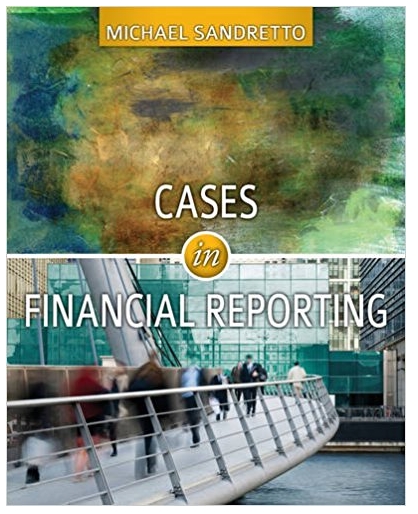Q7 is based on the market scenario discussed here Pure Components Pricing with Competition: The following is an extension of the idea of Pure Components Pricing. Here, in addition to Company (unit cost for your firm) and Consumer (Segment benefits and sizes) factors, we also have competition (unit cost for a competitor). To solve this pricing problem, you can start by plotting the locations of consumers on a graph. When selecting the prices of the products for a company, you have to consider the optimal pricing strategy and/or pricing reactions of the competitor, and the resulting consumer surplus from the competitor's product(s). As an aid for your thought process, you may want to use the ideas discussed in 'Competition-Based Pricing' (Slide #13, Lecture 24). Company and Competition: Consider a marketplace that has two competing food trucks - Loco Buns and Krazzy Kale (You may pick either one to be your company). Assume that a food truck can only have up to two items on their menu - a 'Burger with fries' and a 'Salad' (the food quality, taste, etc. are identical for both food trucks). Also, the food trucks are located right next to each other so that one food truck can see the competitor's price(s) and, if necessary, immediately react by modifying its own price(s). The two food trucks have different unit costs: Loco Buns: Unit cost of 'Burger with fries' Isi and unit cost of "Salad' = $2 Krazzy Kale: Unit cost of 'Burger with fries' = $2 and unit cost of 'Salad' =$1 . Consumers: The market has two consumer segments (A and B). For these consumers... Consumer Surplus from a product = Perceived Benefit from the product - Price of the product Each customer will either buy a 'Burger with fries' or a 'Salad' or not buy anything at all. No one will buy both food items. The segment sizes and the perceived benefits of customers in these segments are below: Perceived Benefits (in s) Segments Segment Size (total number of units that can be sold to a segment) Burger with fries Salad A 30,000 3 3 1 B 30,000 IN 4 Q7. (4 points) Assuming both food trucks want to maximize their respective profit, answer the following questions (Show your calculations and give clear explanations and reasoning for your answers; you'll get partial points for your steps / discussions): (a) Which item(s) will be sold by Loco Buns and at what price(s)? Which segment(s) will buy from Loco Buns? What will be the optimal profit of Loco Buns? a. optimal (b) Which item(s) will be sold by Krazzy Kole and at what price(s)? Which segment(s) will buy from Krazzy Kale? What will be the optimal profit of Kcarry Kale? Q7 is based on the market scenario discussed here Pure Components Pricing with Competition: The following is an extension of the idea of Pure Components Pricing. Here, in addition to Company (unit cost for your firm) and Consumer (Segment benefits and sizes) factors, we also have competition (unit cost for a competitor). To solve this pricing problem, you can start by plotting the locations of consumers on a graph. When selecting the prices of the products for a company, you have to consider the optimal pricing strategy and/or pricing reactions of the competitor, and the resulting consumer surplus from the competitor's product(s). As an aid for your thought process, you may want to use the ideas discussed in 'Competition-Based Pricing' (Slide #13, Lecture 24). Company and Competition: Consider a marketplace that has two competing food trucks - Loco Buns and Krazzy Kale (You may pick either one to be your company). Assume that a food truck can only have up to two items on their menu - a 'Burger with fries' and a 'Salad' (the food quality, taste, etc. are identical for both food trucks). Also, the food trucks are located right next to each other so that one food truck can see the competitor's price(s) and, if necessary, immediately react by modifying its own price(s). The two food trucks have different unit costs: Loco Buns: Unit cost of 'Burger with fries' Isi and unit cost of "Salad' = $2 Krazzy Kale: Unit cost of 'Burger with fries' = $2 and unit cost of 'Salad' =$1 . Consumers: The market has two consumer segments (A and B). For these consumers... Consumer Surplus from a product = Perceived Benefit from the product - Price of the product Each customer will either buy a 'Burger with fries' or a 'Salad' or not buy anything at all. No one will buy both food items. The segment sizes and the perceived benefits of customers in these segments are below: Perceived Benefits (in s) Segments Segment Size (total number of units that can be sold to a segment) Burger with fries Salad A 30,000 3 3 1 B 30,000 IN 4 Q7. (4 points) Assuming both food trucks want to maximize their respective profit, answer the following questions (Show your calculations and give clear explanations and reasoning for your answers; you'll get partial points for your steps / discussions): (a) Which item(s) will be sold by Loco Buns and at what price(s)? Which segment(s) will buy from Loco Buns? What will be the optimal profit of Loco Buns? a. optimal (b) Which item(s) will be sold by Krazzy Kole and at what price(s)? Which segment(s) will buy from Krazzy Kale? What will be the optimal profit of Kcarry Kale








